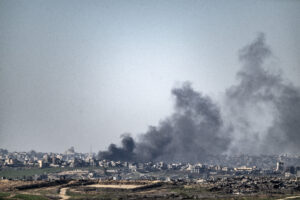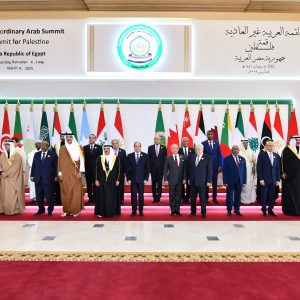Forgotten cultural heritage in Syria’s Palmyra
As Syria returns to stability, archeologists rush to preserve country’s rich cultural heritage
PALMYRA, Syria (MNTV) – Located in the heart of Syria, stands the Roman Theatre of Palmyra, a magnificent architecture signifying the cultural heritage of the country, often portrayed as marred by political chaos.
The theatre was built during the Severan period of the Roman Empire, and was once a thriving cultural hub.
However, decades of conflict and destruction have left its future uncertain, despite ongoing restoration efforts, says Rethinking the Future.
The Roman Theatre in Palmyra, distinct from its surrounding structures, showcases Graeco-Roman architectural influence.
Constructed at the center of a colonnaded piazza, it opens to the South Gate of the ancient city. Built as a beacon of hope during the empire’s recovery following the fall of Jerusalem, the theatre symbolized Palmyra’s prosperity and artistic vibrancy.
The influence of Corinthian design—particularly in the slender, fluted columns adorning the stage—reflects the grandeur of Roman architectural mastery.
For centuries, the theatre lay buried under sand, until excavation and restoration efforts in the 1950s revived its original state.
Uniquely, it lacks the three-tiered seating rows common to Roman amphitheaters, suggesting it was abandoned before completion.
The remaining Ima Cavea, the closest section to the stage, comprised twelve rows and measured 92 meters in diameter, traditionally reserved for society’s elite.
Historically, the Roman Theatre served as a focal point for artistic and cultural events, including folk music performances during the annual Palmyra Festival.
Emperor Nero himself honored the structure by placing his statue in one of its niches, marking its significance in the ancient world.
The Roman Theatre’s fate took a tragic turn during Syria’s civil war. A designated UNESCO World Heritage site, it became a battleground in 2013 when access was restricted due to escalating conflict.
By 2015, control of the theatre shifted between the Syrian government and the terrorist group ISIL. Upon its recapture by Syrian forces, it was found largely intact, though satellite images later revealed extensive damage when ISIL retook the site in late 2016.
The proscenium, the central stage façade, suffered significant destruction before Syrian forces regained control in 2017.
Despite years of devastation, efforts to restore Palmyra’s historical landmarks continue. Since the city’s reclamation, reports indicate that restoration work is actively underway.
While uncertainty remains over whether the site will ever fully regain its former cultural prominence, the resilience of the Syrian people and their commitment to preserving heritage signal a hopeful future.
The Roman Theatre of Palmyra remains an enduring symbol of both Syria’s artistic legacy and its determination to rise from the ruins.










